Almería was called Al Mariyat, (Mirror of the Sea) and was one of the major ports in Andalucía with a thriving export trade in silk, cotton and brocade
By Nick Nutter | Updated 18 Mar 2023 | Almería | Cities |
Login to add to YOUR Favourites or Read Later
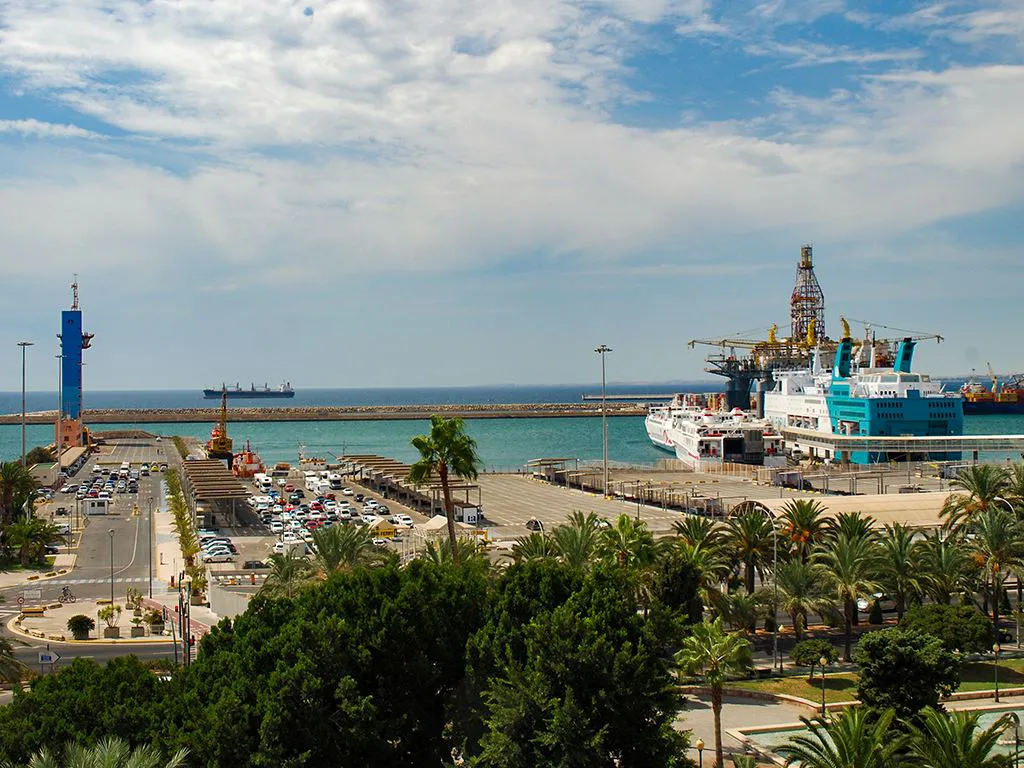
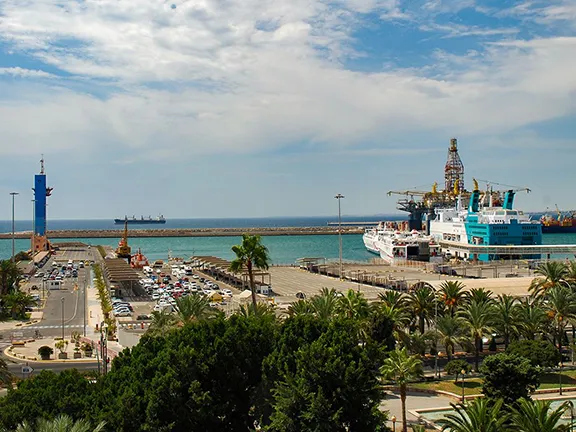
Almería city, the Mirror of the Sea
If you were asked for a list of tourist attractions in Andalucía, it is not likely that Almería City would appear on that list. You may mention the Cabo de Gata, just a few kilometres east, or Tabernas just a few kilometres north, but Almería itself? At the moment there are only a few decent hotels so the city is not crowded with tourists, but that will change as the authorities are trying to put Almería on the tourist map.
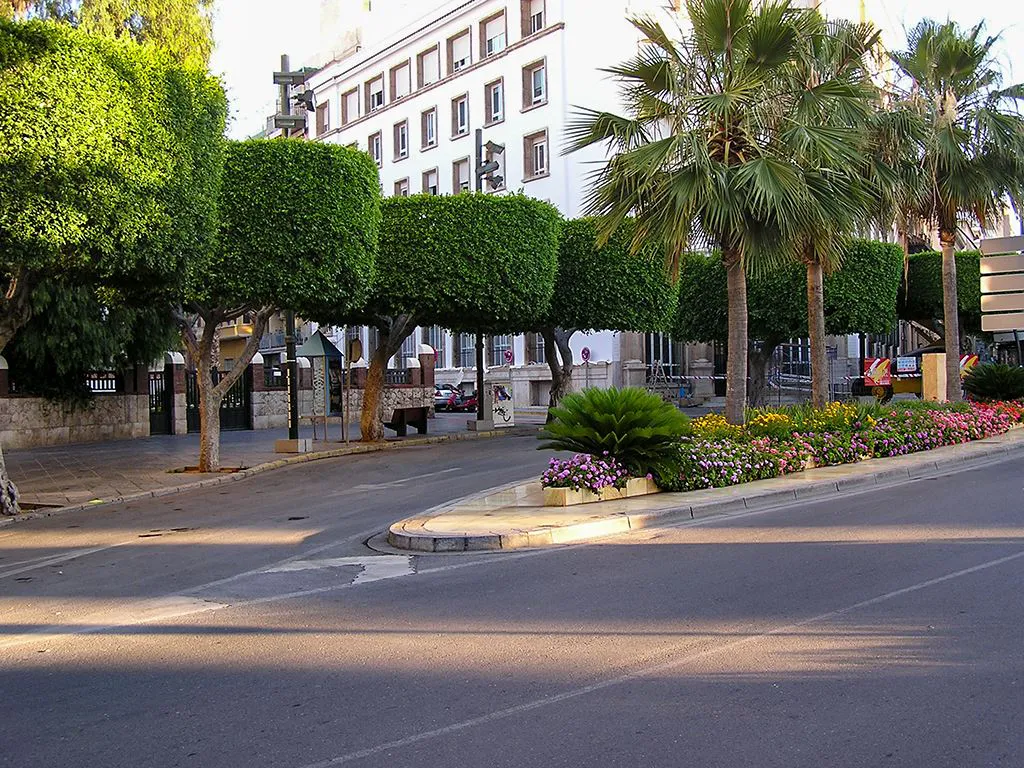
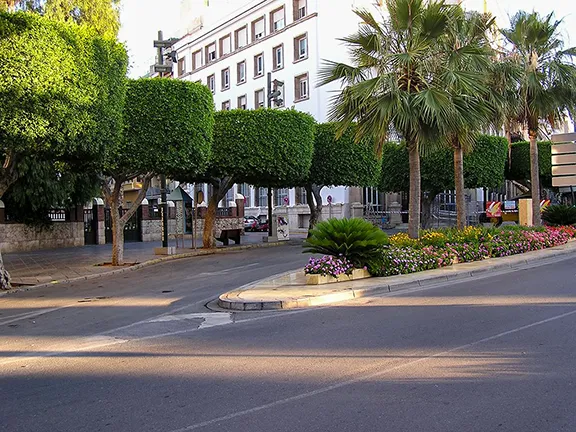
The modern City of Almeria
In the last few years, the city has improved dramatically with modern restaurants in the cloisters surrounding the Cathedral brightening up what used to be a dark, uninviting area. The main street through the city, Avenida de Federico Garcia Lorca, is a modern, tree-lined boulevard with cafes, restaurants and bars with other streets branching off full of designer shops and boutiques. In the days of the Córdoba Caliphate, Almería was called Al Mariyat, (Mirror of the Sea) and was one of the major ports in Andalucía with a thriving export trade in silk, cotton and brocade. Merchants visited Almería from France, Italy, Egypt and Syria.
To protect this asset, in 955 AD, the Moors built the Alcazaba. Today the Alcazaba, the second largest in Andalucía after the Alhambra at Granada, dominates the old town that clings to the rock below the fortress and the urban sprawl that has grown around since.
Today the port is still important, exporting the fruit and vegetables grown in the acres of plastic greenhouses that surround the city on three sides.
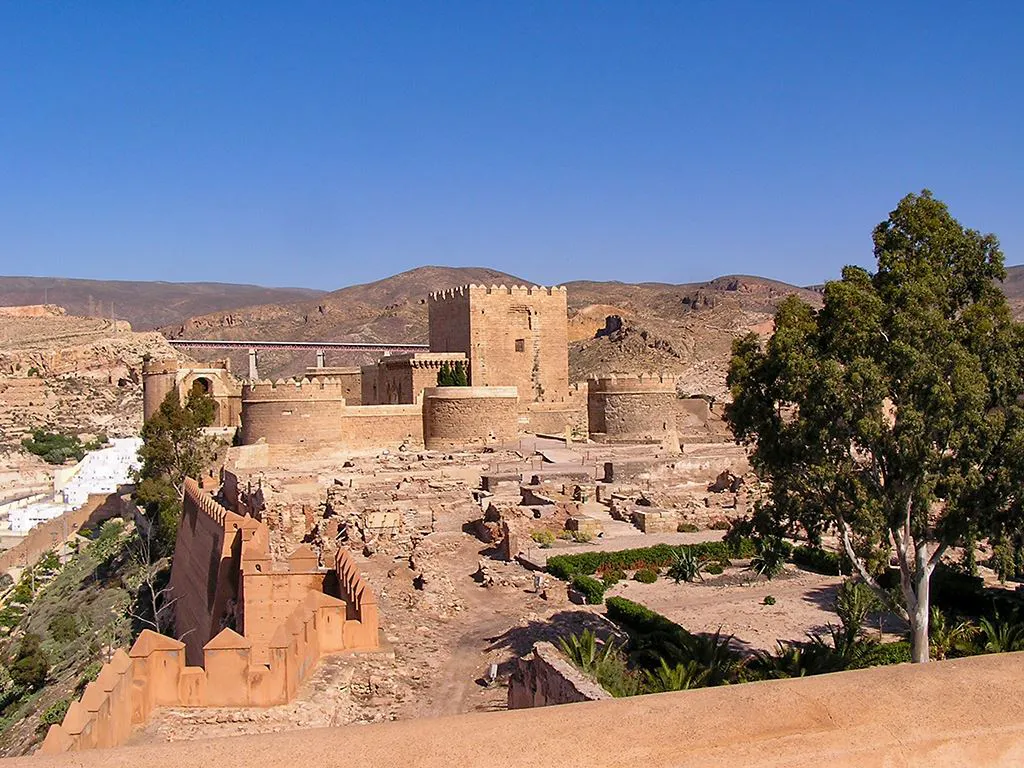
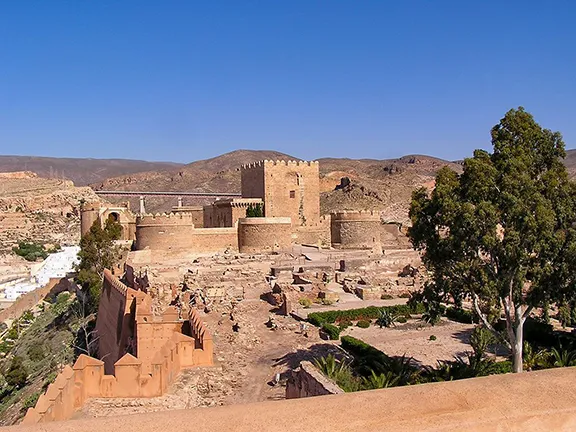
Almeria Alcazaba a fortified city
In its heyday, the fortress could house 20,000 troops. One of the main problems overcome by the Moors was supplying them with enough water in this township that sits on the edge of Europe’s only semi-arid zone. They built aqueducts from the hills to the north of the city using technology borrowed from the Romans and, by a complicated system of underground water cisterns (aljibes), and a water wheel, they piped water through the fortress to provide water for drinking and bathhouses. The aljibe can still be seen today in the first section of the Alcazabar that is now a beautifully laid out garden but was once a major residential area. As you pass through the fortified wall at the north end of this section, you will see the wall built in the 11th Century, crossing the ravine to the east that massively extended the town.
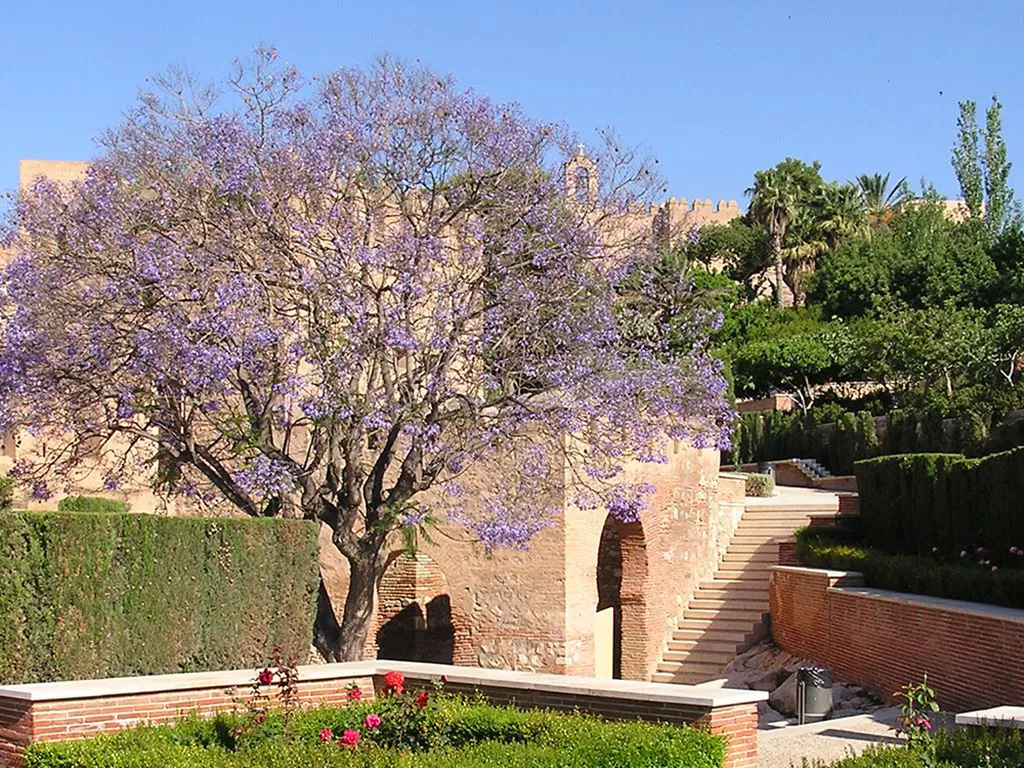
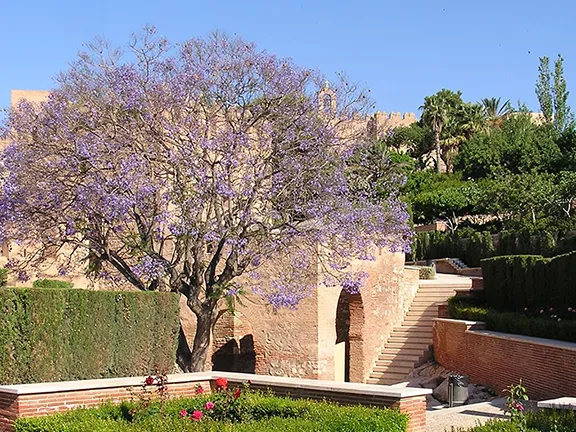
The Palace of the Almotacin
The second section is the fortified palace city. Buildings in this area housed the nobles and included mosques, houses, baths and a system of aljibes separate from that of the rest of the town. The Palace of the Almotacin was at the north end of this section. Today the great cross-shaped courtyard is still there, with, in the southeastern corner, the Queen’s Private Bath. The third and highest section clearly shows a different style of architecture with circular towers. This area was built after the Christian monarchs took the city in 1489. Access is via a drawbridge over a moat. From the enormous Tower of Homage and Tower of Gunpowder, there are excellent views over the entire Alcazabar and beyond to the port and city.
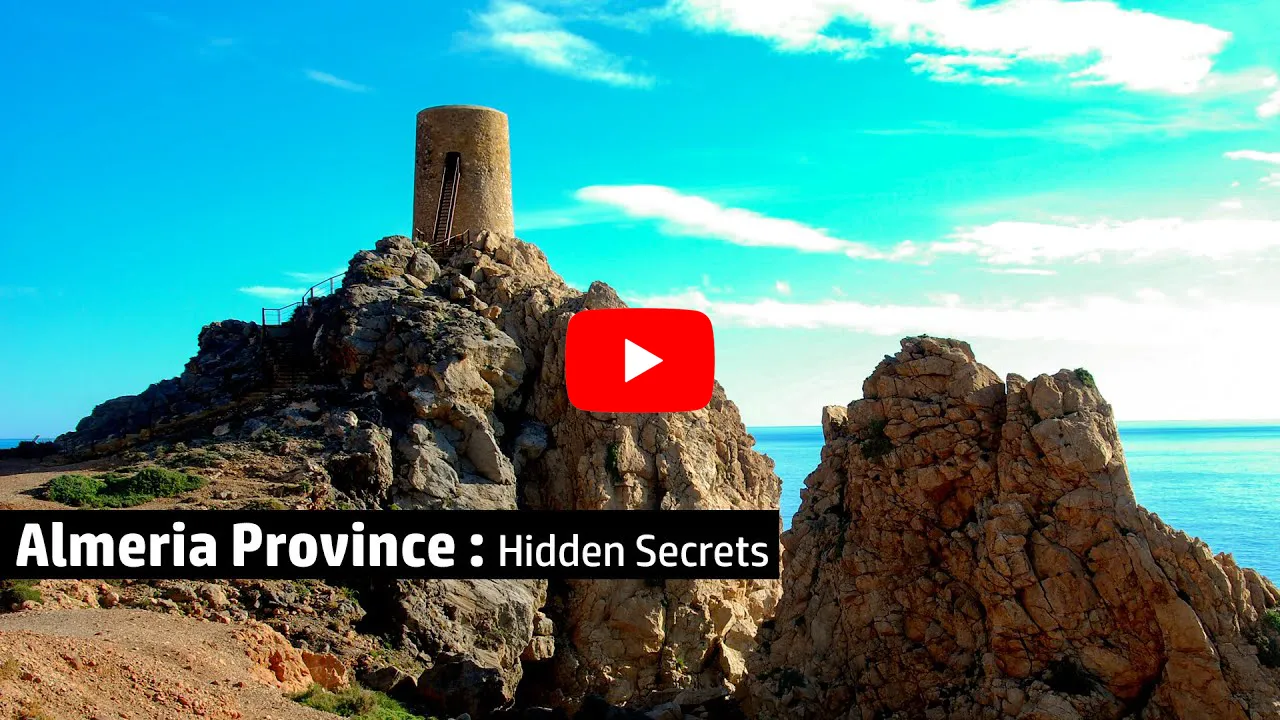
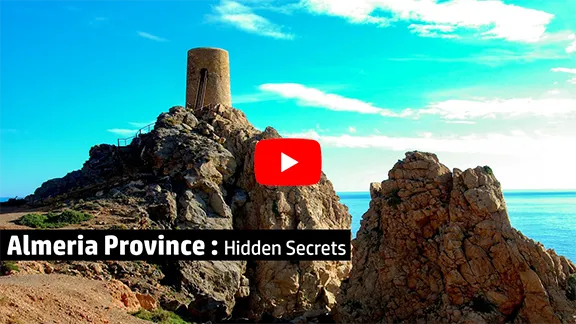
Video By: Julie Evans
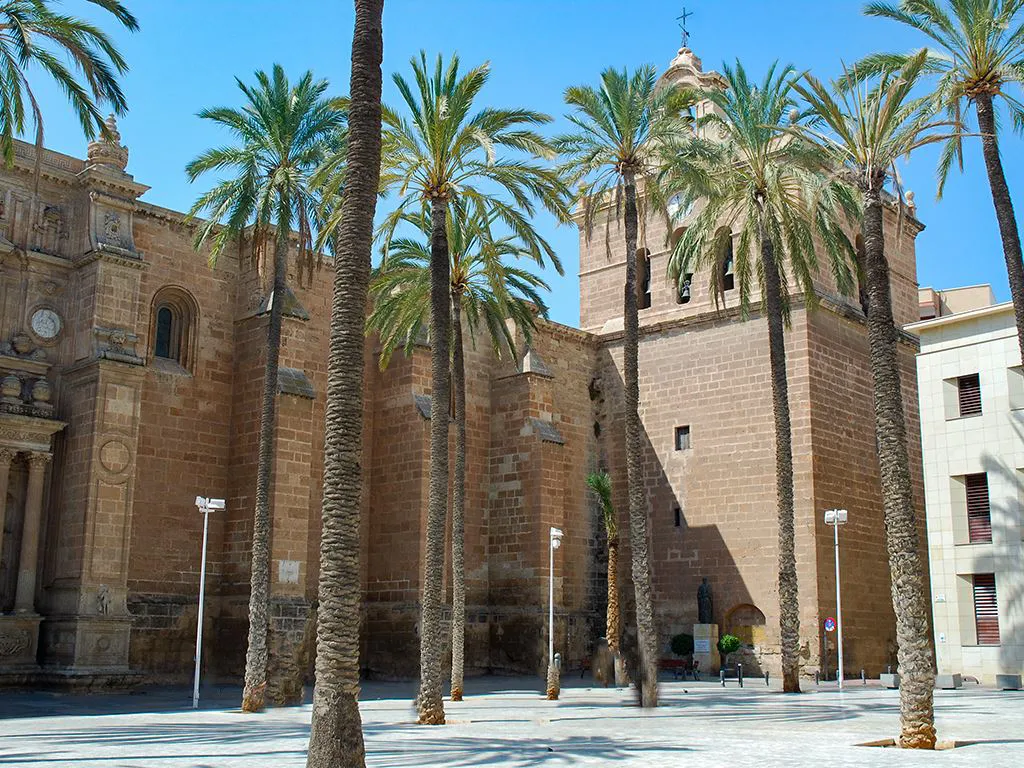
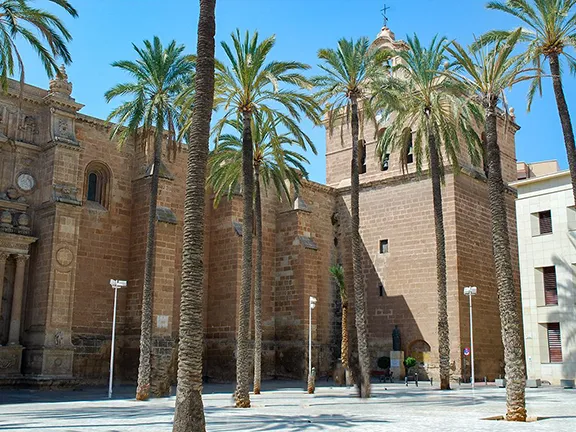
The Cathedral of the Incarnation of Almería
If you look south-east from here into the city, you will see what appears to be another fortress. It is, in fact, the Cathedral of the Incarnation of Almería. It was built during the 16th Century and served as both a place of worship and as a lookout point to warn of the Berber pirates that were prevalent at that time. The four towers at the corners of the solid square building all had a cannon installed for further defence. Although unusual to find a fortified church, if you enter the building, you will discover why it was thought necessary. In the centre of the Cathedral is an impressive altar with priceless artwork including a tabernacle designed by Venture Rodriguez and paintings by Alonso Canon.
Apart from the Alcazaba and Cathedral, the main attraction is the Archaeological Museum. The museum was purpose-built to house the exhibits from the world famous Copper Age site of Los Millares, and they have made a magnificent job of it. It was opened in 2006 and in 2008 won the European Museum of the Year Award. For those interested in the prehistory of the area this museum is an outstanding example of what can be achieved.
The ruined city declined until the 18th Century when British and French companies moved into the area to mine the iron ore found nearby. Their legacy is the elevated rail track at the eastern end of the city that took the ore to the waiting boats. It was built by a British mining company, ‘The Alqife Mines Railway Limited’ in 1902. Close to the elevated track is another beautiful example of iron architecture, the railway station, built in 1895. In the central part of the city, astute observers will notice a third, mostly uncelebrated legacy of the ironworker’s craft, the Central Market, Mercado Central. Despite the out of town shopping centres, it remains a thriving meat, fish and vegetable emporium. Opened in 1892 the gates and window grills are as elegant and delicate as filigree.
King Ferdinand and Queen Isabella did not wrest Almería from Moorish hands until 1489. Over the following hundred years, no less than four earthquakes devastated the city, so most of what you see now is 16th Century and later.
More recent history can be seen below the Paseo de Almería. Between 1937 and 1938, over 4.5 kilometres of tunnel was excavated 9 metres below ground. These were to protect the inhabitants of the city during the Spanish Civil War. Tours of the renovated tunnels may be arranged by appointment. The tourist information office has details.
There is enough to see in the city of Almería to occupy the visitor for a day or so. Its real value is as a centre from which to explore the surrounding countryside, east to the Cabo de Gata with its superb beaches, north to the copper age sites and into the desert to visit western cowboy towns.